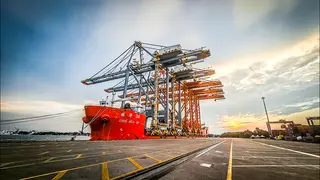“
With 470 new aircraft to enter its fold in a few years, Air India will need to build a strong MRO (maintenance, repair and overhaul) facility in India, said its CEO Campbell Wilson.
Air India was privatised without Air India Engineering Services Ltd (AIESL), which was its maintenance and MRO. Since privatisation, it has had to build its own engineering capabilities as a necessity. The airline will also continue to use AIESL until the end of next year, almost certainly longer for many services.
Also read: Bar set high, quite convinced will get there: Air India CEO
“We do need to have a bit more capability in-house. We are expanding that a little bit so it can cover the rest of the fleet, and serve some of the end aircraft and we will continue to strengthen them,” he told presspersons of The Hindu group during his recent visit to Chennai.
For heavy maintenance, Air India will look at what the future holds, whether it’s with AIESL or in some other way, shape and form, he said. “We need to build a stronger presence and a strong MRO capability in India,” he said.
“Our 470-aircraft order has given a lot of excitement and a lot of impetus to many component manufacturers, engine manufacturers, to think more seriously about the opportunity in India and potentially partner with Tata companies to help catalyse the ecosystem here,” he said.
Talks with Star Alliance members
“We are talking to members of the Star Alliance about how we can strengthen the partnership. To be honest, Air India has not really contributed a lot to the alliance, and so, it did not receive a lot from the Alliance. But they now look at India very differently. So, we are still in those exploratory talks about how our alliance partnerships can take hold, whether any then translate into MRO or in other arrangements,” he said.
Niti Aayog in a report on MRO in India in October 2022 said the exponentially rising civil aviation industry presents a strong case for the development of the MRO industry in India. Although at a nascent stage, the size of the industry was estimated at ₹170 crore as of 2021 – it is expected to reach ₹400 crore by 2031, registering a CAGR of 8.9 per cent as compared to the global average of 5.6 per cent.
The report was done well before Air India placed the order for 470 aircraft in February this year. Indigo also plans to acquire nearly 500 planes. The two airlines will increase the market size multi-fold, said B Govindarajan, an aviation consultant.
Though the engineering facilities and infrastructure of the earlier Air India was the best in the industry in this part of the world, unfortunately the maintenance arm was not part of the privatisation, leaving Air India and its group airlines without maintenance capabilities commensurate with their requirements, Govindarajan said. So, with its growing needs, especially with more and more aircraft expected to join the fleet size, Air India should look at developing the required capabilities either on its own or in association with other leading airlines or manufacturers.
Air India in an attempt to enhance its maintenance capabilities should not just look at MRO maintenance to take care of the hull and skull, but the heart -- aircraft engines as well.
JRD Tata realising the need that the then Air India would need continuous supply of serviceable engines, established the Engine Overhaul Division at Santa Cruz that was once the pride of Indian aviation. It did not just handle Air India’s requirements, but also other global airlines. “Now, everyday we hear that aircraft of Indian operators are on ground across the country for want of serviceable engines for replacement. It would turn into a major issue unless the nation creates its own capability,” said Govindarajan.








Comments
Comments have to be in English, and in full sentences. They cannot be abusive or personal. Please abide by our community guidelines for posting your comments.
We have migrated to a new commenting platform. If you are already a registered user of TheHindu Businessline and logged in, you may continue to engage with our articles. If you do not have an account please register and login to post comments. Users can access their older comments by logging into their accounts on Vuukle.